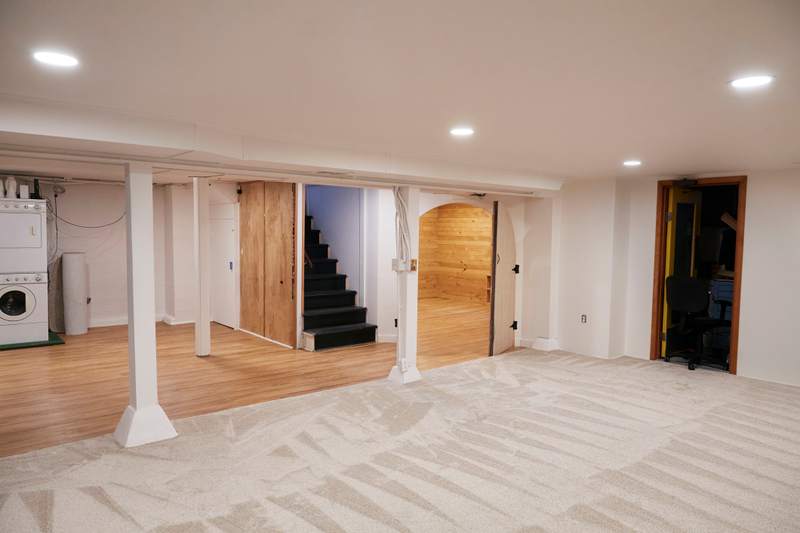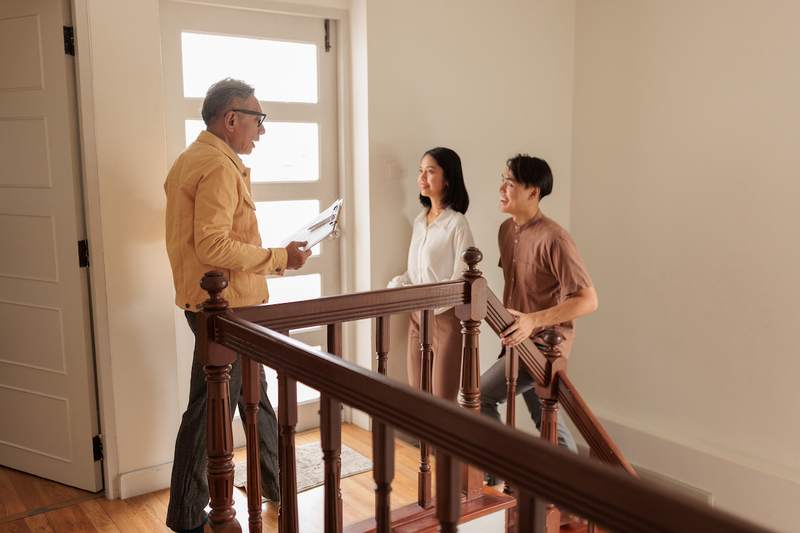When browsing home listings, people usually look at a few key details, including the number of bedrooms, the number of bathrooms, and the square footage of the home.
Square footage is so important that many real estate websites include the price per square foot in listings. The more square footage a home has, the more it tends to be worth — so you may wonder whether basement space gets included in square footage.
Key Takeaways:
- There are several different types of basements, including walk out basements, garden-level lot basements, and aboveground basements.
- Basements generally are not included in square footage, with a few exceptions for finished basements based on local law.
- Even if it doesn’t count toward square footage, a finished basement can boost your home’s value.
Does a Basement Count as Square Footage?
The truth is, whether basement space counts toward a home’s square footage will depend on whom you ask. Some will include all types of basements in square footage, some will never include it, and others will require the basement to be finished and livable to count.
A common rule of thumb is that basements that are entirely underground do not count toward square footage. Basements that have some exterior walls above-grade may be included in a home’s square footage.
Here are some different perspectives on this question:
- State by state: Each state — and sometimes municipality — has its own rules for whether basements count as square footage. Wellesley, Massachusetts, for example, counts the basement toward square footage only if it’s finished and at least 25% of the external basement walls are above ground.
- Appraiser: Appraisers tend to follow state and local guidelines, so if your state includes basement space in square footage, the appraiser will count it.
- Fannie Mae: Fannie Mae, a government-sponsored enterprise, considers any level of a home that is even partially below-grade to be entirely below-grade, and won’t include it in the home’s square footage.
- Zillow: Zillow receives information about your property from municipal records, so its data will be based on whatever rules your local government has set.
Legal ingress or egress
In many places, whether a basement has an ingress or egress — or a way in or out of the home — determines if you can count the basement as square footage. If the space lacks legal ingress or egress, it won’t be counted as part of the home’s square footage.
What constitutes a legal way in and out of the home depends on local laws. For example, the International Building Code typically requires that all spaces have at least two ways to get out of the building.
So, if your basement has one stairway to the main floor and no other way in or out, it wouldn’t have legal ingress or egress. If there are two stairways — or one stairway and an exterior door in a portion of the basement that is above-grade — the space likely has proper ingress and egress.
Different Types of Basements
There are different types of basements, and depending on where you live, they may or may not count as square footage:
- Walkout basement: Also known as daylight basements, these spaces are common on sloped properties. Though the space may be largely or entirely underground at the front of the home, the slope allows for a stairway or door at the rear of the home where you can walk out of the basement and into the backyard.
- Garden-level lot basement: These basements are partially underground and partially aboveground at all or almost all points. There’s typically space for windows but not enough room to add a door.
- Aboveground basement: These are very similar to walkout basements in that they’re far enough aboveground in some areas to allow you to exit the basement to the outside. However, unlike walkout basements, which may use stairs to exit the home, these basements have normal doors leading outside.
What Counts as Square Footage?
Square footage is commonly used to measure the amount of space within a home. It may include both the gross living area of the home and other spaces that don’t count as gross living area, such as unfinished parts of the home.
Gross living area of a home
Gross living area is used to determine how much space in the home is finished and suitable for occupancy. According to the Appraisal Institute, gross living area is “the total area of finished, above-grade residential space excluding unheated areas such as porches and balconies.”
There are some key distinctions between livable space, finished space, and above-grade square footage, according to Shaun Martin, owner of We Buy Houses In Denver, a homebuying company:
- Livable space: “Livable space is the area of a home that can be used for everyday living. This includes the bedrooms, bathrooms, living room, kitchen, and any other areas of the home that are regularly used,” Martin says.
- Finished space: A finished space is any area of the home that has been finished with drywall, paint, and flooring.
- Above-grade square footage: “Aboveground square footage is the total area of all livable spaces in a home excluding any basements or attics,” Martin says.
When Is the Basement Included in Square Footage?
Whether a basement is included in a home’s square footage varies depending on where you live and whom you ask. However, there are a few baseline requirements for a basement to be included.
For example, a basement must be finished. Even if your state permits the inclusion of basement space in your home’s square footage, unfinished space does not count.
Beyond that, it depends heavily on local law. Space that is fully above-grade is almost always counted toward square footage. Basements that are partially above-grade are sometimes included.
When Is the Basement Excluded From Square Footage?
Each state has different rules, but there is some basic criteria regardless of where you live.
One is that unfinished basements don’t count toward your home’s square footage. Without proper finishing and access to essentials like heating, you can’t count a basement as living space.
Another is that areas that are fully below-grade are rarely included in a home’s square footage. The basement needs to be at least partially aboveground.
Does a Basement Add Value to a Home?
Though the basement might not count toward a home’s square footage, it can still increase the home’s value, even if it’s unfinished. Laws and regulations may prevent a homeowner from advertising their basement as additional square footage, but buyers understand that a basement has its uses — like storage and entertaining.
According to a 2017 report by Remodeling magazine — the most recent data available — the average cost to remodel a basement is $71,115, and a basement remodel adds an average of $49,768 to the home’s value.
“Below-grade square footage wouldn’t be considered as valuable as above-grade square footage, but it would still add a considerable amount of value to a property,” says Bill Samuel, a Chicago-based real estate investor.
How Does Square Footage Affect Mortgages?
Square footage affects the home appraisal, which in turn affects the buyer’s mortgage.
Some appraisers use desktop appraisals, which means the appraiser never visits the home. Instead, they use publicly available information — such as the home’s location and square footage — to determine its value. So, a home with less square footage could appraise for a lower amount than expected, making it more difficult for a buyer to get a large enough loan to match the home’s purchase price.
Fannie Mae also has strict requirements for basements, stating that any level even partially below-grade can’t count toward a home’s gross living area, regardless of its finish. While Fannie Mae doesn’t have strict requirements for how much living area a home must have, it does state that there should be homes of a comparable size in the same area for it to be willing to approve a loan. If a home is much smaller than other properties in the area, it could impact borrowers’ ability to get a mortgage insured by Fannie Mae.
Basement Square Footage FAQ
Whether a basement counts as square footage is complicated, so it’s important to make sure you understand how it can affect the value of your home.
It depends. Having windows means the space is partially aboveground, which makes it more likely that the basement will count as square footage. However, the space must also be finished.
Some entities will refuse to include a level with any belowground space in a home’s square footage.
Finishing a basement will return about 70% of the amount spent in increased home value. The typical price to finish a basement is a bit more than $71,000, so you can expect a finished basement to add just under $50,000 to a home’s value.
Even if the basement isn’t included in a home’s square footage, appraisers will take the space into account when valuing a home. A rule of thumb is that below-grade living space is worth about half as much as above-grade space, so appraisers may value basement space at half the price per square foot compared with the main floors of the home.
The Bottom Line on Finished Basements
Though finished basements can be valuable living space, whether they count in a home’s square footage is not always clear. Regardless of whether you can include basement space in square footage, it adds value to a property.






